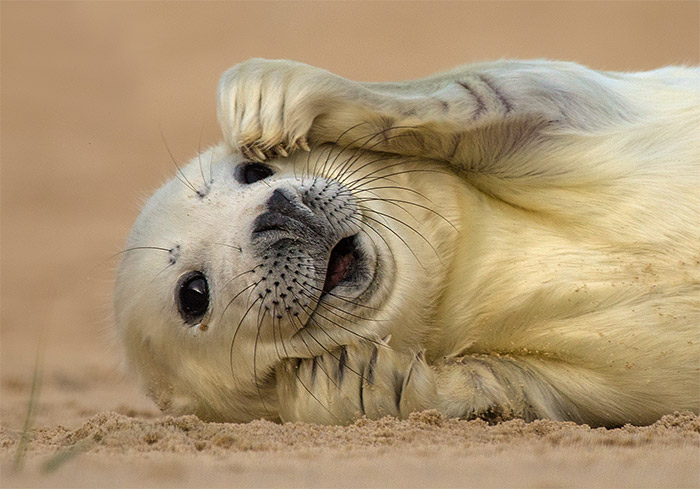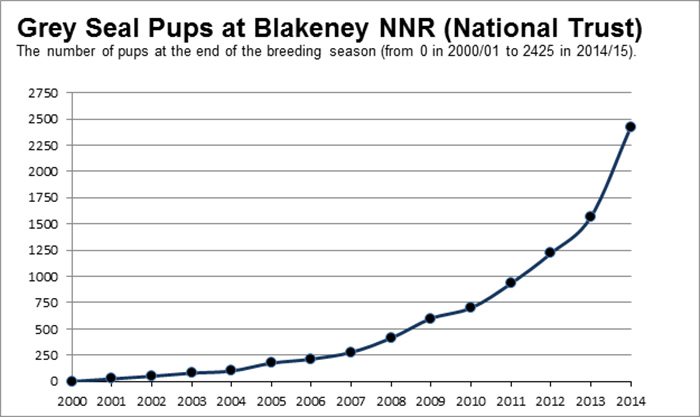Blakeney seals its place in the record books
Blakeney Point has shot to number one as the largest breeding site for Grey Seals in England. The number of Grey Seals born on this beautiful stretch of Norfolk coastline has increased one hundred fold in just 14 years, when the first 25 pups were born on the spit.

National Trust rangers monitor the colony by tracking and recording seal pups born at Blakeney Point throughout the winter. The count, which began in November, revealed that a total of 2426 seals were born this season, almost double the number born there just two years ago.
So, we asked coastal ranger, Ajay Tegala, who lives on Blakeney Point to tell us more…
This season has been absolutely incredible at Blakeney. It’s breath-taking to see such large numbers. Having first been here five years ago, you can see how much it has increased in such a short space of time. It really is mind-blowing to see the change.
Blakeney is a perfect site for Grey Seals, not least because of the absence of predators and the relative remoteness which keeps disturbance to a minimum. On top of that, it’s a safe place with a sheltered, sandy beach providing plenty of space to support the large numbers, which keeps mortality rates low.

In December 2013 we saw seal rookeries across England devastated by a tidal surge which hit the English coastline. However, at Blakeney the height of sand dunes kept the colony protected, meaning that they were barely affected.
As well as Grey Seals, the rare habitat of sand dunes on the shingle ridge at Blakeney Point attracts unusual plants, insects and birds, making it a popular destination for walkers. However, disturbance caused by walkers during the breeding season increases the chances of fighting amongst the adult Grey Seals, which can lead to pups being crushed.
To help prevent disturbance to the seals and to keep visitors safe, we’ve fenced off the westerly-most mile of Blakeney Point’s beach and dunes. Signposted viewing areas have been introduced, keeping access open while limiting the dangers to seals and walkers.
A more intimate view of the colony will be available on the new series of BBC Winterwatch which begins on Monday 19 January. Thermal imaging techniques were used for the first time to film the reserve at night, when the seal pups are born.

Across the National Trust, there are a number of other sites which give visitors the chance to see this winter wildlife spectacle. Coastal spots include Giant’s Causeway, Baggy Point and the Farne Islands. The Farnes have also celebrated a successful breeding season, with the rangers recording a total of 1651 seal pups born this winter, the islands’ highest total since 1971.
The record-breaking year for Blakeney Point comes as the National Trust kicks off a year of celebrations to mark the 50th anniversary of its Neptune campaign. Launched in 1965, the campaign set out to raise £2 million to protect coastline around England, Wales and Northern Ireland from the threat of development. Fifty years later, the appeal has raised more than £65 million and the Trust now protects and cares for 742 miles of coastline.
Support the work of The National Trust on the coastline
Supporters wishing to donate to help the National Trust look after the coastline around the East of England and the wildlife which calls it home, including the Grey Seals, can text NTCOAST to 70060 to give £3.
The National Trust
19 January 2015





